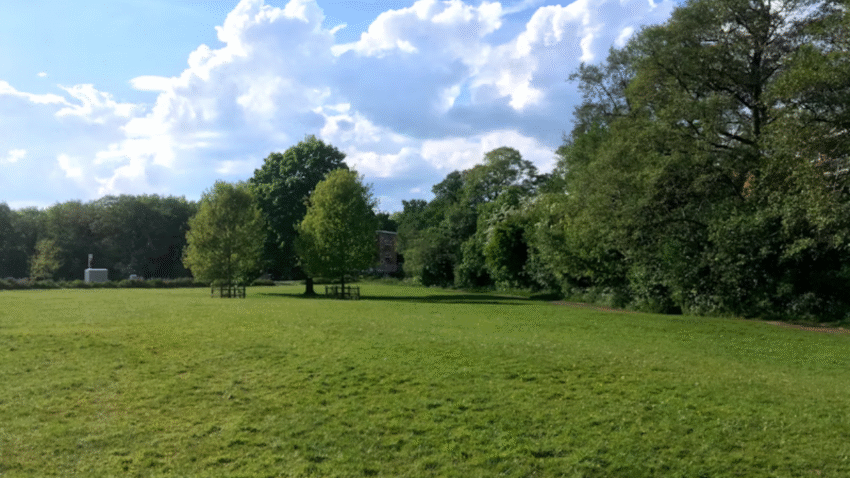Introduction
Tired of soggy patches or puddles that won’t go away after it rains? Learning how to fix pooling water in your yard is essential for keeping your lawn healthy and your foundation safe. Standing water drowns grass roots, invites mosquitoes, and can damage your home’s landscaping. This step-by-step guide will help you tackle drainage problems and restore your lawn to a lush, dry, and usable space.
Why Fixing Pooling Water Matters for a Healthy Lawn
When water pools in your yard, grass roots can’t breathe properly. Excess water suffocates roots, creates muddy patches, and makes it easy for fungus, pests, and weeds to thrive. Poor drainage can also lead to soil erosion, dead spots, and foundation issues if water collects near your home.
Solving pooling water problems means improving how water moves through your yard — giving your lawn stronger roots, better growth, and a safer, more beautiful outdoor space.
Step-by-Step Guide to Fixing Pooling Water in Your Yard
1. Identify the Cause
Start by figuring out why water is pooling. Common causes include:
- Low spots in the yard where soil has settled
- Compacted soil that doesn’t drain well
- Poor grading that directs water toward your home instead of away
- Blocked gutters or downspouts overflowing into the yard
Walk around after a heavy rain to pinpoint where water collects and how it flows.
2. Aerate Your Lawn
If soil compaction is the problem, aerating can make a huge difference. Use a core aerator to remove plugs of soil, which helps water soak into the ground instead of pooling on top. Aerate in early spring or fall when grass is actively growing.
Tip: For severe compaction, you may need to aerate yearly until soil structure improves.
3. Fill in Low Spots
Low spots can create puddles even with good drainage elsewhere. Use topsoil mixed with compost to fill in depressions. Gently grade the area so water flows away from your home and into lower areas of your yard or toward proper drains.
Level and seed or sod the patched areas to match the rest of your lawn.
4. Improve Your Yard’s Slope
Lawns should slope away from your home’s foundation at a drop of about 2–3 inches every 10 feet. If your yard slopes toward the house or a patio, regrading may be needed. For minor grading, you can do this yourself with a rake and shovel. For larger projects, you might want to hire a landscaping professional.
5. Install a French Drain
If you have chronic pooling water, installing a French drain can help. A French drain is a gravel-filled trench with a perforated pipe that redirects water away from problem areas.
How to install:
- Dig a trench that slopes slightly downhill from the pooling area to a drainage outlet.
- Line it with landscape fabric to keep out dirt.
- Place a perforated pipe in the trench and cover it with gravel.
- Wrap the fabric over the top, then cover with soil and grass.
This solution works well for yards with heavy clay soil that drains poorly.
6. Add a Dry Creek Bed
A dry creek bed is an attractive option for redirecting surface water. Dig a shallow trench in the path where water naturally flows, line it with landscape fabric, then fill it with river rock or gravel. This slows down runoff, guides water away, and looks great in your landscape.
7. Improve Gutter and Downspout Drainage
Check that your gutters and downspouts are clear of leaves and debris. Extend downspouts at least 6–10 feet away from your home’s foundation using downspout extenders or splash blocks. This prevents roof runoff from saturating your lawn and causing puddles near the house.
8. Consider a Rain Garden
If you have a consistently wet area that can’t be easily drained, transform it into a rain garden. A rain garden is a shallow depression planted with water-loving native plants that soak up excess water naturally. It adds beauty to your yard while helping manage stormwater.
Common Mistakes to Avoid
Mistake 1: Ignoring Drainage Issues
Solution: Deal with pooling water as soon as you notice it. Waiting only makes problems worse and damages your lawn’s health.
Mistake 2: Adding More Soil Without Leveling
Solution: Fill low spots properly and grade them so water flows away. Dumping soil without reshaping just moves the problem around.
Mistake 3: Using the Wrong Soil Type
Solution: Use well-draining topsoil mixed with organic matter when filling low areas. Heavy clay holds water and makes puddles worse.
Mistake 4: Installing a French Drain Without Slope
Solution: Make sure your French drain slopes about 1% (1-foot drop per 100 feet) to keep water moving.
Mistake 5: Not Extending Downspouts Far Enough
Solution: Downspouts should discharge water well away from your home and any low spots to avoid new pooling areas.
Extra Lawn Care Tips & Hacks
✅ Topdress After Fixes: Once you’ve aerated or regraded, topdress with compost to boost soil health and encourage better drainage long-term.
✅ Seed Bare Spots: Always reseed areas disturbed by drainage work to prevent weeds and erosion.
✅ Redirect Runoff from Hard Surfaces: Install permeable pavers or redirect driveway runoff to rain barrels or drains instead of letting it flood your lawn.
💡 Related read: Don’t miss our guide on [how to aerate your lawn properly] for better drainage and root health.
Conclusion
Fixing pooling water in your yard is essential for keeping your lawn green, healthy, and safe from damage. Whether it’s filling low spots, installing a French drain, or simply improving your soil’s ability to absorb water, you’ll protect your turf and your home’s foundation for years to come.
Bookmark this guide so you’re ready to tackle soggy spots any time they appear — and enjoy a beautiful, dry, and thriving yard every season.
